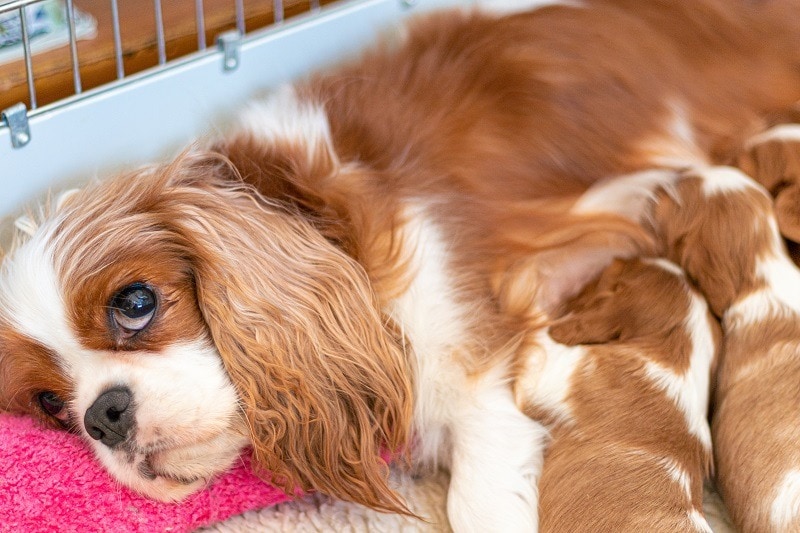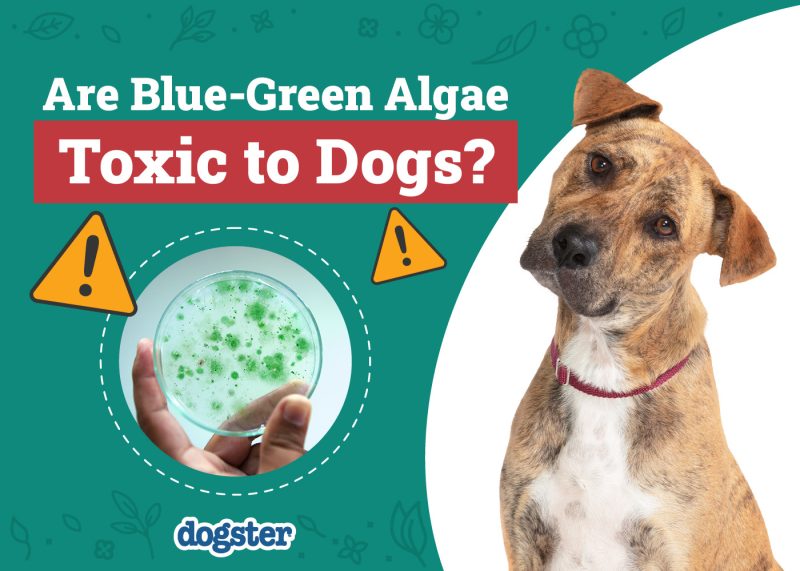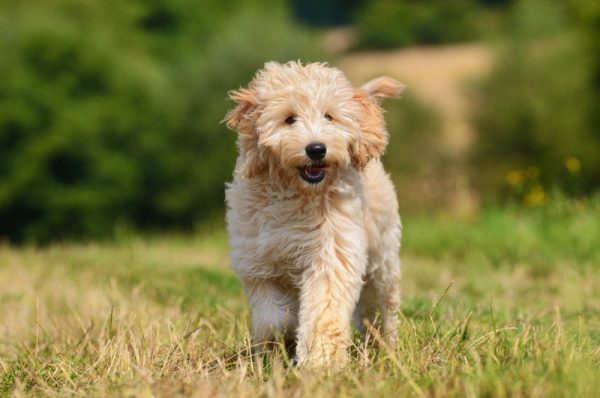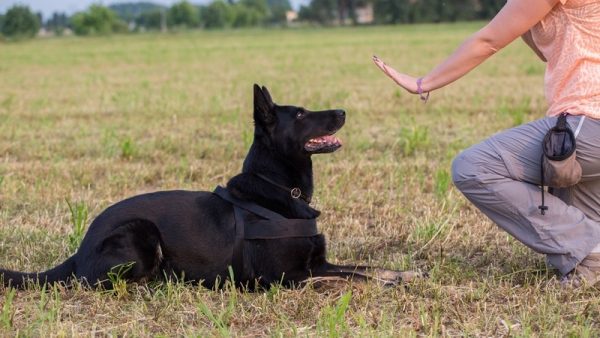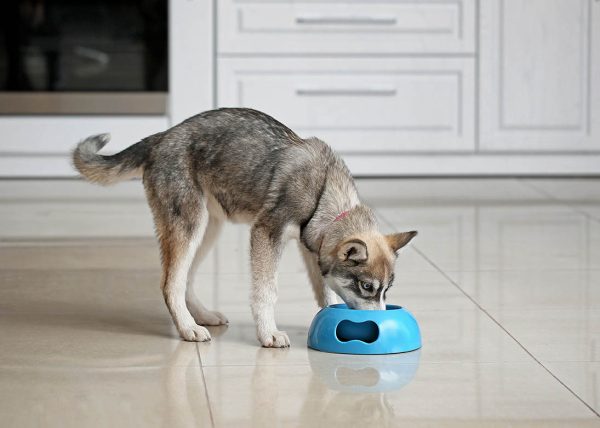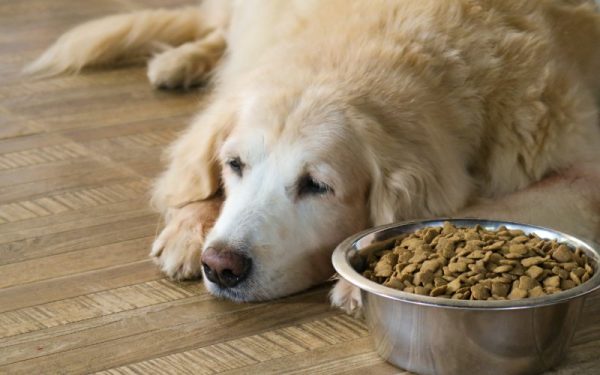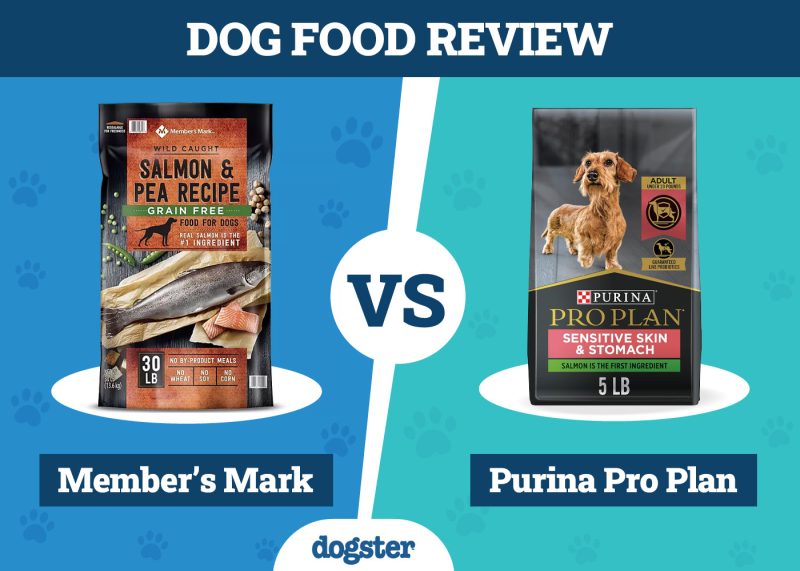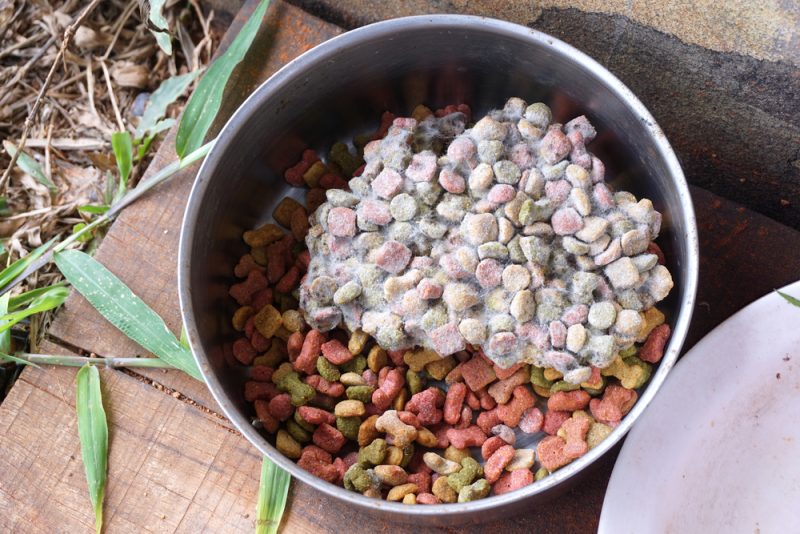In this article
Good postnatal care, also called postpartum care, ensures that your dog recovers from the rigors of giving birth so that she can nurse her puppies and stay healthy. In most cases, there are no complications following birth. Still, they do happen, and as well as making sure that your dog and her litter are perfectly happy, you need to keep an eye out for conditions like metritis, mastitis, and eclampsia.
Below, we’ll discuss how to care for a mother dog to ensure good physical health. We also have some information on the early days of caring for your puppies. It’s essential to speak to your vet if you have any queries about your dog or her puppies or if you think they’re not doing well, as early veterinary treatment is crucial.

Dog Births
Although we consider young dogs of large and giant breeds to be puppies until they reach 12 months of age or even more, most female dogs reach sexual maturity between 6 and 9 months. This means that your 6-month-old puppy, depending on the breed size, may be physically old enough to get pregnant. Pregnancy lasts approximately 63 days, which is roughly three trimesters of 21 days. This differs according to breed, but the average gestation period is 58–68 days.
It can be challenging to determine an exact due date. Conception does not necessarily occur on the same day as mating. Your vet can examine the cells of the vaginal wall and perform hormone testing to give you a more accurate estimate of the ideal breeding time, but most dogs are not born on their due date, and it is only given as an estimate of when you should expect a litter.
A litter can have as many as 14 puppies or as few as one, and although the average litter size varies according to breed, it is usually five to six puppies. According to the Guinness Book of World Records, the largest litter was 24 puppies.1
The puppies are born blind and deaf and are only able to see and hear after approximately 2 to 3 weeks. Like people, puppies are also born without teeth. They spend an impressive 16 hours a day sleeping, and initially, they can’t poop without mom’s help. With most puppies only reaching adulthood by the age of about 6 to 12 months old, the mother dog plays a very important and active role in her puppies’ lives.
So, you need to ensure that she recovers from the birth quickly so she can clean, feed, toilet, and care for her litter. In the meantime, you can help. Studies show that puppies respond positively when people talk and sing to them, which also enables you to bond with them. Also, considering that just looking at pictures of puppies can help people focus better, imagine the positive impact of helping to rear a litter of pups.
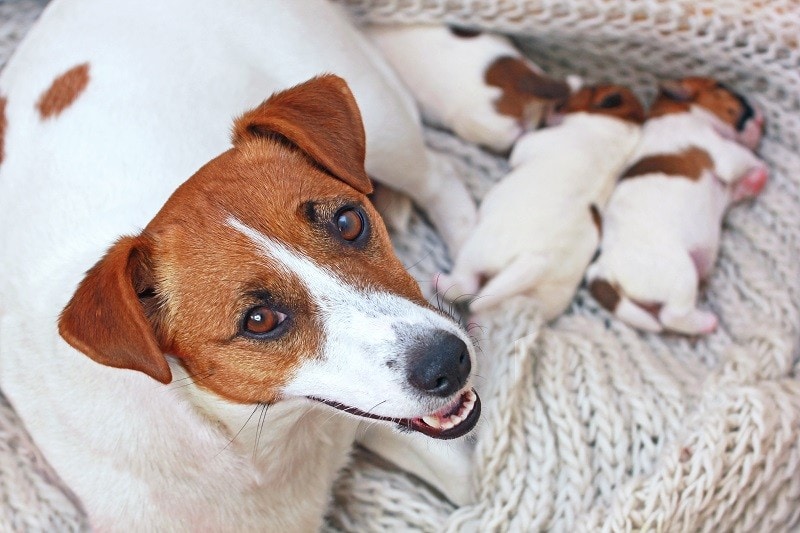
Before Giving Birth
Good postpartum care starts before or during pregnancy. In fact, if you’re intentionally breeding your dogs, you can monitor nutrient, vitamin, and mineral levels to ensure proper fetal development, so postnatal care arguably starts months before your dam gets pregnant.
While pregnant, you should provide top-quality care for your dog. This includes feeding her high-quality puppy food during the final trimester or approximately the last 3 weeks of pregnancy. The mom and puppies will benefit from you feeding puppy food from this period right until the puppies have been fully weaned. It provides optimal levels of protein and calcium, and the mother will pass these nutrients on through the feeding of her milk.
Most vets and experts agree that unless the mom tends to put on weight by eating too much or has a small litter, you can feed her as much as she wants during this time. You can also use the pregnancy as a time to prepare. Your dog is going to want the canine equivalent of a nest. This should be warm and secluded and away from too much noise or activity. The mother should be encouraged to spend time there, which can be done by offering food and water in the new nesting area.
Also, ensure you take the mother to the vet for her scheduled appointments. This ensures the puppies are developing well and the mother remains healthy. A vet visit before the intended pregnancy is also crucial to make sure the mother has received all of her required vaccinations and worming.
In humans, melatonin concentration at night reaches its maximum toward the end of pregnancy, often meaning that women are more likely to give birth between 2 and 5 o’clock in the morning.2 However, when it comes to dogs, there is no current scientific backing to confirm if melatonin impacts their cycle or pregnancy.3 However, it’s best to check the nesting area several times daily and overnight as the due date approaches. Check that the mother is doing fine and look for signs of labor.
How Long Does It Take for Dogs to Give Birth?
Labor can last anywhere between 3 and 12 hours, and if it reaches 24 hours, you should seek veterinary assistance.
If you need urgent assistance, we recommend to contact a vet online.
If you need to speak with a vet but can't get to one, head over to PangoVet. It's our online service where you can talk to a vet online and get the advice you need for your dog — all at an affordable price!
The birthing process occurs in three stages:
- Stage 1 – The mother dog is starting to nest and can become unsettled. She may be panting, pacing, and refusing her food. Her rectal temperature will drop to less than 100º F (37.8º C), which indicates that labor is approaching quickly. This stage usually lasts 24 hours, and the cervix is fully dilated toward the end of it. She may also have a small amount of red or brown discharge with weak contractions but without straining.
- Stage 2 – This stage can last 3–12 hours, depending on the size of the litter, and is the actual passing of the puppies. If it takes 24 hours or longer, the mother and puppies can face an increased risk of complications, and veterinary help should be sought.
- Stage 3 – Stage 3 is the arrival of the afterbirth and placenta. Check how many placentas were passed, so that you know if any of them are left inside.
An owner rarely has to intervene in the birth. It often occurs during the night when you are asleep, and science still doesn’t have an evidence-based explanation for this or an answer as to whether melatonin plays a role. Nighttime tends to be quiet, and this may be a part of the reason birth may happen during this time.

Postpartum Care for Dogs
Because dogs do not usually need to go to the hospital or the vet to give birth, except when a C-section is required or complications occur, postpartum care is the responsibility of the owner and is usually considered to start immediately after the birth.
Immediate Needs
Immediately after the mother has given birth, you should remove all the bloodied and soiled material from the nesting box and replace it with clean, dry, warm, comfortable, and safe bedding. Discharge and bleeding can continue for some time after the birth, so be prepared to keep changing the bedding.
Next, clean the mother with a damp cloth. Do not bathe the puppies until at least a few weeks after birth, and only use a very mild vet-approved dog shampoo that is considered safe for puppies as well as grown dogs. Otherwise, just stick to water.
Immediately after the birth, the mom will likely be exhausted. She may sleep intermittently after the process is complete, and her puppies will usually sleep or nurse during this time. She will also regularly clean her puppies, which helps to stimulate their toileting and enhances their bond.
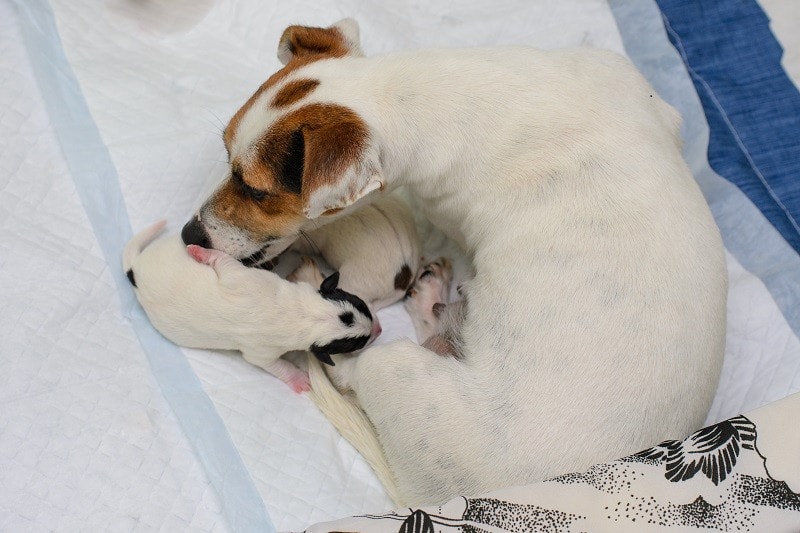
The First Days
The first few days are exciting. The mother will keep her puppies clean and provide the food and nutrition that they require through milk. She will also have to stimulate urination and defecation, which she achieves by licking their abdomen and genitals. It may be possible to pet the puppies, but only if it doesn’t upset mom.
Within the first 24 hours of the puppies’ delivery, you should contact your vet and make an appointment. The vet will ensure that the mother and puppies are doing well and developing as expected. Then, monitor the dogs closely for 7 days. For the first 7 days, you should check on the mother and her litter frequently throughout the day and night. Complications can occur, and they can occur quickly. Look for signs of distress and make sure that the mother is getting brighter and healthier-looking rather than looking increasingly tired.
Feed regular, small meals of high-quality puppy food and make sure the mother is eating as much as she wants to unless she has a tiny litter of just one or two puppies. For the first 24 hours, she may not be as interested in food, but you should still offer small, healthy meals. The puppies will constantly be depleting mom’s source of vitamins and minerals and you must ensure that all the dogs have their nutritional requirements met. Continue to feed puppy food to the mother during this period because it should have the higher protein and fat levels that she needs.
Check her teats. Some swelling should be expected, but you need to monitor them to ensure it is minimal and that they do not become infected. The milk should be white and consistent in texture. Consult a vet if it is discolored, contains blood, or appears inconsistent.
Keep others away. Naturally, moms want to protect their puppies immediately. In the wild, this is when the mother and puppies are at their most vulnerable, and even the most loving and affectionate dog can become protective over her puppies when they are first born. She may let you approach and even pet and hold her puppies, and she may allow others to do so, but if it causes her any stress or she shows any signs of protective aggression, you should prevent other people and animals from getting too close to the litter.
Give her plenty of space and privacy, and do not interrupt her bonding with the puppies. Provide regular bathroom breaks. The mother may not want to go outside for the first 24 hours and is unlikely to be able to do so at all for the first few hours. Replace soiled bedding and other materials, and try to remove the mother from her puppies for a few minutes at a time so that she can relieve herself as required.
The Coming Weeks
Weaning begins at around 3-4 weeks, and it takes approximately 8–10 weeks before a puppy is fully weaned. Even after this time, the mom’s work is far from complete. She will continue to socialize and train her puppies, and the babies should not be removed from their mom until they reach about 10 weeks, and the minimum is 8 weeks. During this time, you will still have to provide some support for the mother and her litter of little ones.
Monitor for signs of eclampsia. Eclampsia, also known as milk fever, occurs within the first month after birth. It can cause muscle tremors, panting, restlessness, stiff gait, and convulsions and may even lead to death if left untreated. If your dog shows signs of eclampsia, you should seek veterinary assistance immediately.
It’s also vital to check the mother’s temperature daily. A dog’s temperature normally falls between 101 and 102.5 degrees Fahrenheit. If the temperature is higher than normal or the mother is feeling unwell in any way, consult a vet.
If you need to speak with a vet but can't get to one, head over to PangoVet. It's our online service where you can talk to a vet online and get the advice you need for your dog — all at an affordable price!


Water and Food
You should always provide fresh and plentiful water for your dog, which is especially important when nursing. The water helps maintain a consistent and healthy supply of fresh milk. Ensure the water is easy to get to and replace it frequently if necessary.
It is common to feed a nursing mom puppy food. Puppy food is dense in the nutrients and protein that puppies need. Feeding these nutrients to mom enables her to pass them on through the milk she provides.
Should I Get Postnatal Veterinary Checks?
If there are any complications or even doubts during a dog’s pregnancy, you should seek veterinary help. This will be necessary if you believe any puppies or placentas have not been birthed.
If everything went well and the puppies were delivered safely and healthily, you should still arrange for a postpartum checkup, typically occurring within 48 hours of final delivery. Monitor your dog’s health yourself so that you can report on behavior and physical attributes and so that your vet can check for things like an increase or decrease in temperature.
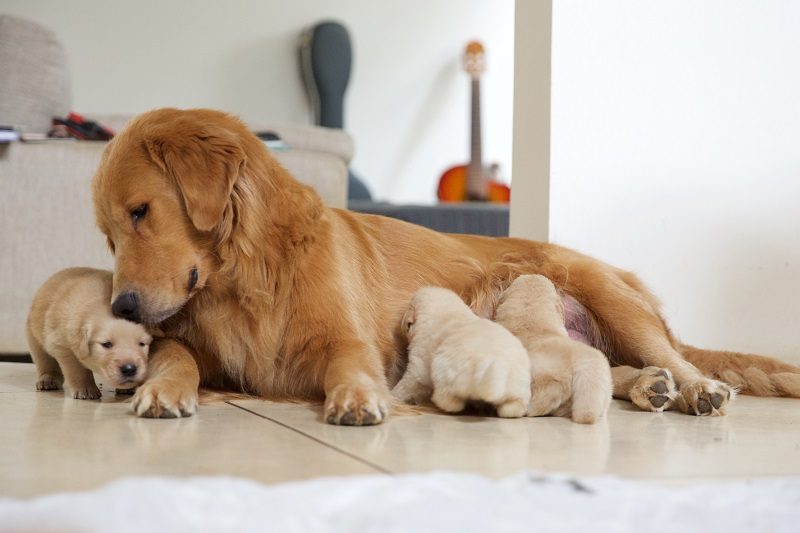
Is Mom Producing Enough Milk?
Colostrum is the name given to the first milk that a mother provides for her litter. It is packed with antibodies and helps protect puppies from illnesses and diseases. If the mother is not producing, and you have provided plenty of fluids in the form of water or chicken broth, along with high-quality puppy food, you need to consult your vet, who can provide a colostrum supplement.
You will also need to check that the mother provides enough milk for her puppies. Puppies cry, but they could be hungry if they are constantly crying. Place the smallest dogs next to the hind teats, and if you notice that one or some of the puppies are constantly getting less than the rest of the litter, speak to your vet about supplementing with bottled milk to ensure proper nourishment for all of the puppies.
Puppies should double in weight every week. If they are not gaining weight quickly enough, it is another sign that they are not receiving the milk they require. If the mother does not produce enough milk, you may have to supplement it with commercial puppy milk.
Vaginal Discharge
Some vaginal discharge can be expected in the weeks following birth. It should be reddish-brown and may continue for up to 3 weeks. If the discharge becomes redder or increases in volume, becomes smelly, or your dog is not herself, refusing to eat, vomiting, or having a fever, you should call the vet immediately.
It is also worth noting that if your dog was spayed during a C-section birth, there should not be any vaginal discharge following the birth.
Fever
Dogs have a normal rectal temperature between 101° and 102.5° F. Monitor your dog’s temperature and look for sudden changes or increases. Temperature changes are a good sign of progression or regression and may be accompanied by other signs of fever if the mother is unwell.

Conditions to Look For
When monitoring the mother, there are certain conditions that you should be looking for:
- Metritis – This is an infection of the uterus and is caused by a bacterial infection. Metritis usually occurs within the first week of giving birth and can cause sterility, septic shock, and may even cause death if it is untreated. Signs may include a swollen abdomen or vaginal discharge that smells bad and is mixed with blood or a dark green color. Your dog may also ignore her puppies and become depressed with this condition, and it is common following a difficult birth. A sample of the discharge is usually taken and tested, and treatment may require hospitalization of your dog to correct dehydration and electrolyte levels.
- Acute Mastitis – Mastitis is inflammation of the mammary gland. This condition is caused by bacterial infection and is usually witnessed in nursing dogs. The most common signs are pain or discomfort around the teat, but other signs include swelling and redness of the teat and mammary gland, change in the milk color and consistency, fever, reduced appetite, lethargy, and dehydration. Puppies may also become malnourished because they cannot get all the milk they require. Treatment varies according to the type of mastitis but may involve antibiotics prescribed by your vet. In many cases, puppies must be fed supplemental milk if mastitis occurs.
- Eclampsia – Occurring in nursing mothers, eclampsia is a massive drop in calcium levels. This condition usually occurs within the first 4 weeks because it is when she is producing the most milk. Although early signs are difficult to spot, this condition can lead to the mother being unable to walk. She may also experience spasms and convulsions. Once eclampsia starts, it progresses quickly. Treatment includes the emergency introduction of calcium to the dog.
- Agalactia – Agalactia means the inability to produce milk and is a concern in nursing mothers. It can be caused by mastitis but may also be caused by other diseases and conditions. Milk production will drop rapidly and may stop completely, and the treatment requires the management of any underlying condition and the feeding of a supplementary diet to puppies. If milk levels are not increased immediately, you may have to feed supplementary milk to the puppies to ensure they remain healthy and continue to get the nutrients they need.

Puppy Care
Although most dogs make excellent mothers, some may require assistance. Getting involved can help you establish the bond between you and the puppies.
Approach Cautiously
However, you should only handle very young puppies if the mother is comfortable with you doing so or if it is necessary. Moms can develop aggressive tendencies. This is less likely if she has a close bond with the person trying to handle her puppy. If she shows signs of aggression, you should keep handling the puppies to an absolute minimum.

Ensure Warmth
The nest provides warmth and comfort for the puppies. It’s vital to replace the bedding frequently, especially during the first 3 to 4 weeks.
Start Socializing
Socialization is an important part of a young puppy’s life. It ensures that they will get along with people and other animals in the future, and a well-socialized puppy will be a lot easier to deal with later in life. Whether you are keeping or rehoming the puppies, socialization will help ensure a better life.
Weaning Begins
Mom will continue to feed her puppies until they are around 8 to 10 weeks old, at which point weaning should be finished. Once they are weaned, the mother can put all her effort into looking after herself and ensuring she gets back to optimal health.

Dog Postpartum Care
Looking after your dog after she has given birth is a big responsibility and requires a lot of time and work. Ensure the mother is well hydrated and fed and has occasional toilet breaks on her own. You should also monitor her physical condition, weight, behavior, temperature, and milk production. Only pick up the puppies if the mother is comfortable with it or if it is necessary, and start to wean the puppies when they reach about 3 to 4 weeks of age.
Consult your vet about the process from breeding to weaning for valuable first-hand advice and tips, and ensure that the mother and puppies are getting their preventative health checks, vaccinations, and dewormings.

Conclusion
Caring for a mother dog after she gives birth is a rewarding experience that helps ensure both the puppies and the mother dog stay healthy after birth. It involves setting up a quiet, comfortable nesting space, making sure they have enough food and water, and keeping an eye out for any signs of postpartum complications. Your attentiveness during these early weeks can make a big difference. Regular vet checkups and closely monitoring her behavior will help catch any issues early and provide her with the postpartum care she needs.
- You may also want to read: Postpartum Eclampsia in Dogs
Featured Image By: Colin Temple, Shutterstock
